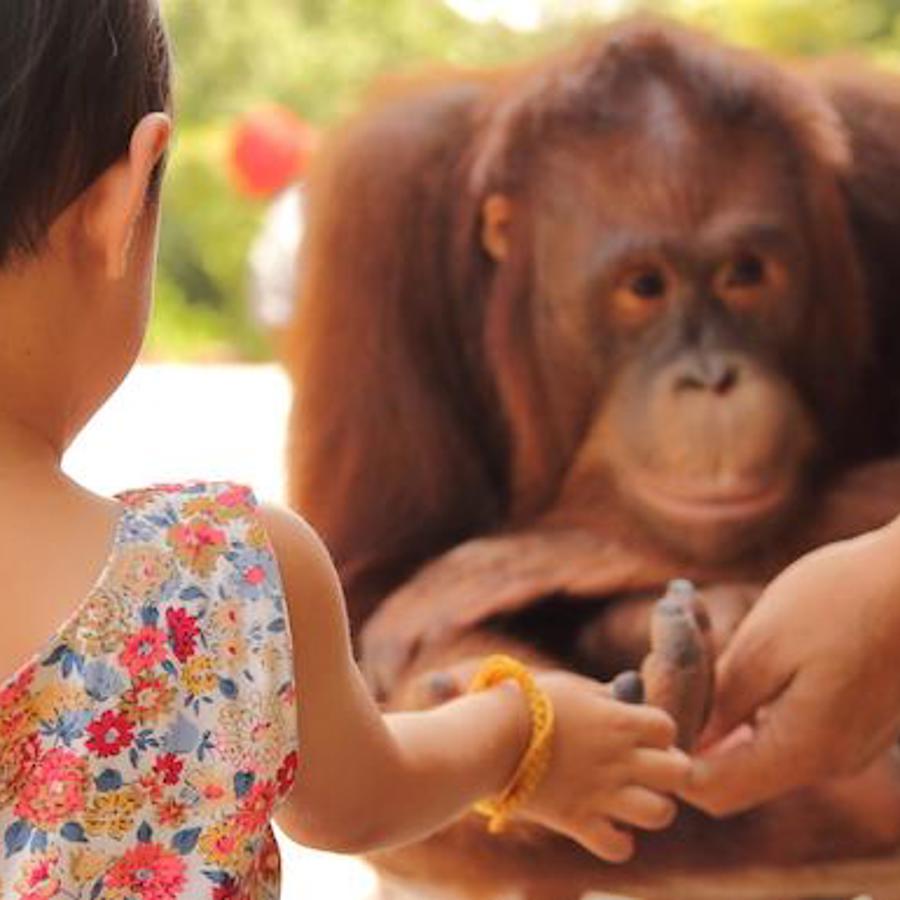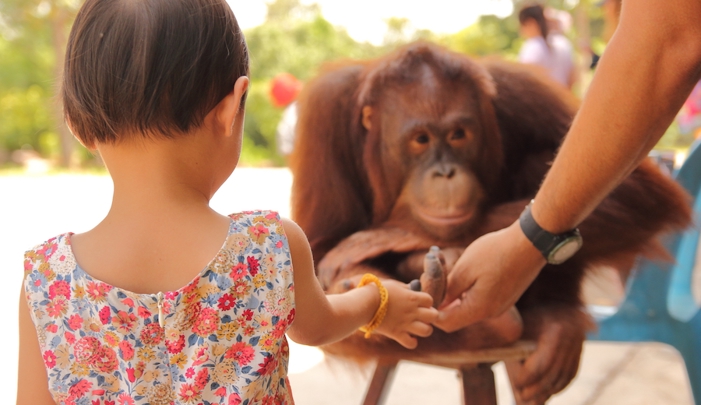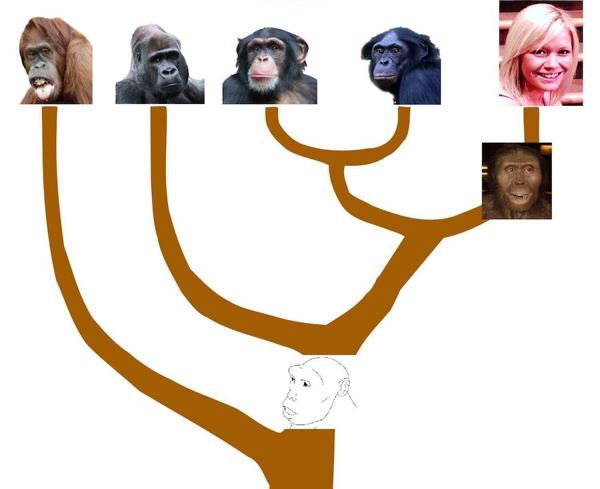
If people evolved from apes, then why are there still apes?
December 1, 2005

- Related Topics:
- Evolution,
- Human evolution,
- Speciation
A high school student from Arkansas asks:
"If people evolved from apes, then why are there still apes???"
This is a good question, and it points out a common misconception. The quick answer is that humans didn't actually evolve from modern apes. But we did both evolve from a common ancestor who happened to look more like an ape than a human.
So where did the ape-like ancestor go? Why did this ancestor evolve into humans and modern apes?
How Evolution Works
This is where evolution comes in. Evolution is a natural process that changes all living things over many generations.
Evolution requires at least two things. First, we all have differences in our DNA, the instructions for making every living creature. These DNA differences lead to various eye colors, skin colors, blood types, and all of the other variations that exist between each of us.
Some of these DNA differences don't matter. Others can be bad and cause diseases and even death. And some of these differences in DNA can help a person to live longer or stay healthier. For example, one DNA difference seems to make people more resistant to HIV and maybe also smallpox and the plague.
Second, evolution requires that DNA be passed from one generation to the next. This way, any survival advantage can be passed from parent to child.
Combining these, evolution works because animals (or other living things) with beneficial DNA differences usually survive longer and are able to have more kids. And those with bad DNA changes often die before they can have kids. Over time, more and more animals have the good DNA, and fewer have the bad DNA. This is called natural selection.
So now that we understand evolution and natural selection, how can this explain why we have humans and apes?

How New Species Evolve
One way natural selection can work to evolve new species is if the old species gets split into two groups. The two groups have to be separated in different environments for a long time. This is what might have happened to cause modern apes and humans to appear. The story probably went something like this.
Sometime between eight million and five million years ago, Africa had more rain and was covered by forests. During this time, an ape-like species (our common ancestor) lived in these forests. They were quite successful and spread all over the continent.
Then the climate began to change, the land began to dry out, and the forests began to disappear. Some of these ape-like creatures continued to live successfully in the woods. But others were forced to leave the woods and go into the open fields of grass.
What works best for survival in the grasslands is different from what works best in the forest. Once our ancestors found themselves out of the woods, they couldn't hide from predators as well, and food was not as plentiful. Many of these ape-like creatures living in the grasslands could not survive.
But some of these creatures did survive — those that could walk on two feet, for example. Walking on two feet may have helped them to run for longer distances to get away from predators. It also may have helped them to find food from further away and have free hands to carry it back home. Whatever the reason, those that could walk on two feet were surviving more often.

The ape-like creatures that could walk on two feet had kids that were also more able to walk on two feet (this is controlled by one's DNA). So every generation, more and more of the surviving population could walk on two feet. The others got killed off by predators and/or starved to death.
Over many generations (and a few million years) living in separate places, we ended up with two different species. The ones in the grasslands walked on two feet, learned to make tools and work in groups, and eventually evolved into us. Those that stayed in the forest evolved into modern apes, like chimpanzees and gorillas. Of course, those in the forest also changed after many years to survive better in the forest.
So there you have it. We didn't evolve from apes; rather, apes and humans evolved from a common ancestor. Natural selection doesn't care about whether a species is smarter or more progressive. It only cares about whether a species can survive long enough to find a mate and reproduce.
Thus, the reason that modern apes are still around is that they have been successful at surviving in their environment. And we are still around because we have also been successful at living in our environment. Perhaps the most amazing thing is that after 5-8 million years, we still share 98% of the same DNA with our distant cousins, the modern apes!

Author: Kim Matulef
When this answer was published in 2005, Kim was a postdoctoral fellow in the Department of Molecular and Cellular Physiology, studying chloride ion channels and transporters in Merritt Maduke’s laboratory. Kim wrote this answer while participating in the Stanford at The Tech program.
 Skip Navigation
Skip Navigation
